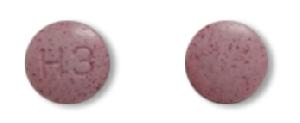Cyanocobalamin Disease Interactions
There are 4 disease interactions with cyanocobalamin.
Cyano-/hydroxocobalamin (vit B12) (applies to cyanocobalamin) hypokalemia
Major Potential Hazard, High plausibility.
Hypokalemia (resulting in death) has occurred during vitamin B12 therapy as a result of increased red blood cell requirements during hematopoiesis. Clinical monitoring and correction of potassium levels prior to and during vitamin B12 therapy is necessary.
Cyano-/hydroxocobalamin (vit B12) (applies to cyanocobalamin) optic nerve
Major Potential Hazard, High plausibility. Applicable conditions: Leber's Disease
The use of cyanocobalamin is contraindicated in patients with Leber's disease (hereditary optic nerve atrophy). Cyanocobalamin has induced severe and rapid optic nerve atrophy in patient's with early Leber's disease.
Cyano-/hydroxocobalamin (vit B12) (applies to cyanocobalamin) malabsorption
Moderate Potential Hazard, Moderate plausibility. Applicable conditions: Malabsorption Syndrome
Absorption of vitamin B12 is decreased in malabsorption syndromes and in pernicious anemia without coadministration of intrinsic factor (IF). Cyanocobalamin is rapidly absorbed following IM or subcutaneous injections. Hydroxocobalamin (cyanocobalamin analog) functions the same a cyanocobalamin, but has induced antibody formation to the hydroxocobalamin-transcobalamin II complex. The use of cyanocobalamin may be preferred in patients with these conditions.
Cyanocobalamin (applies to cyanocobalamin) renal impairment
Moderate Potential Hazard, Moderate plausibility. Applicable conditions: Renal Dysfunction
Cyanocobalamin products contain aluminum that may be toxic and may reach toxic levels with prolonged parenteral administration if kidney function is impaired. Premature neonates are particularly at risk because their kidneys are immature, and they require large amounts of calcium and other solutions which also contain aluminum. Research indicates that patients with impaired kidney function, including premature neonates, who receive parenteral levels of aluminum greater than 4-5 mcg/kg/day accumulate aluminum at levels associated with central nervous system and bone toxicity. Caution and monitoring are recommended.
Switch to professional interaction data
Cyanocobalamin drug interactions
There are 15 drug interactions with cyanocobalamin.
More about cyanocobalamin
- cyanocobalamin consumer information
- Check interactions
- Compare alternatives
- Pricing & coupons
- Reviews (30)
- Drug images
- Side effects
- Dosage information
- During pregnancy
- Drug class: vitamins
Related treatment guides
Drug Interaction Classification
| Highly clinically significant. Avoid combinations; the risk of the interaction outweighs the benefit. | |
| Moderately clinically significant. Usually avoid combinations; use it only under special circumstances. | |
| Minimally clinically significant. Minimize risk; assess risk and consider an alternative drug, take steps to circumvent the interaction risk and/or institute a monitoring plan. | |
| No interaction information available. |
See also:
Further information
Always consult your healthcare provider to ensure the information displayed on this page applies to your personal circumstances.


